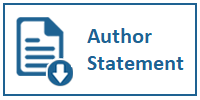Media Affordance in Digital Dakwah: A Study of Religious Communication Practices in Social Media
DOI:
https://doi.org/10.31937/ultimacomm.v16i1.3696Keywords:
Digital da'wah, multimedia content, religious communication, social media, content analysis.Abstract
This research examines the use of multimedia content in digital da'wah, with a focus on religious communication practices on social media. With the development of information and communication technology, da'wah via social media has become an increasingly popular strategy among preachers to reach a wider audience. This study explores various forms of multimedia content, such as videos, images, infographics and animations, and how these contents are used to convey religious messages. The research methodology used consists of content analysis and interviews with preachers who are active on social media. The research results show that multimedia content is effective in attracting attention and increasing audience understanding of da'wah material. In addition, interactions that occur on social media provide space for constructive dialogue between preachers and audiences. However, this research also found challenges faced, including the issue of credibility of information and the misuse of social media to spread ideas that are not in accordance with religious teachings. The conclusions of this research emphasize the importance of appropriate communication strategies and the use of quality multimedia content in digital da'wah to maximize the positive impact on society.
Downloads
References
Asmar, A. (2020). Ekspresi Keberagaman Online: Media Baru dan Dakwah. Jurnal Ilmu Dakwah, 40(1), 54-64. doi:https://doi.org/10.21580/jid.v40.1.5298
Butsi, F. (2019). Memahami Pendekatan Positivis, Konstruktivis dan Kritis dalam Metode Penelitian Komunikasi. Jurnal Ilmiah Ilmu Komunikasi Communique, 2(1), 48-55. https://doi.org/ /10.62144/jikq.v2i1.27
Creswell, J. W. (2009). Research Design: Qualitative, Quantitative, and Mixed Methods Approaches. London: SAGE Publications
De Ramos, N. M., & Esponilla, F. D., II. (2022). Cybersecurity program for Philippine higher education institutions: A multiple-case study. International Journal of Evaluation and Research in Education (IJERE), 11(3), 1198-1206. https://doi.org/10.11591/ijere.v11i3.22863
Evans, S. K., Pearce, K. E., Vitak, J., and Treem, J. W. (2017). Explicating Affordances: A Conceptual Framework for Understanding Affordances in Communication Research. Journal of Computer Mediated Communication, 22(1), 35-52. https://doi.org/10.1111/jcc4.12180
Forster, M. (2016). Phenomenography: A Methodology For Information Literacy Research. Journal of Librarianship and Information Science, 48(4), 353-362. https://doi.org/10.1177/0961000614566481
Gaver, W. W. (1991). Technology Affordances. In Proceedings of the SIGCHI Conference on Human Factors in Computing Systems Reaching Through Technology , 79-84. New York, USA: ACM Press. https://doi.org/10.1145/108844.108856
Griffin, E. (2019). A First Look at Communication Theory (8th ed). New York : McGraw-Hill Education
Hafezieh, N. & Eshraghian, F. (2017). Affordance Theory in Social Media Research: Systematic Review and Synthesis of the Literature. In Proceedings of the 25th European Conference on Information Systems (ECIS), Guimarí£es, Portugal, June 5-10, 2017 (pp. 3155-3166). https://aisel.aisnet.org/ecis2017_rip/63
Hopkins, J. (2016). The Concept Of Affordance In Digital Media. Digital Media: Concepts And Applications, Springer Fachmedien Wiesbaden. 67-78. http://link.springer.com/referenceworkentry/10.1007/978-3-658-08460-8_67-1
Indonesian Internet Service Providers Association (APJII). (2023). APJII Internet Survey. Retrieved December 5, 2023, from https://survei.apjii.or.id/home
Indrawan, J., Efriza, E., & Ilmar, A. (2020). Kehadiran Media Baru (New Media) dalam Proses Komunikasi Politik. MEDIUM, 8(1), 1–17. https://doi.org/10.25299/medium.2020.vol8(1).4820
Junawan, N. H. (2020). Eksistensi Media Sosial, Youtube, Instagram dan Whatsapp di Tengah Pandemi Covid-19 di Kalangan Masyarakat Virtual Indonesia. Baitul Ulum: Jurnal Ilmu Perpustakaan dan Informasi, 4(1), 46-58. https://doi.org/10.30631/baitululum.v4i1.46
Laverty, S. (2003). Hermeneutic Phenomenology and Phenomenology: A Comparison Of Historical and Methodological Considerations. International Journal of Qualitative Methods, 2(3), 21-35. https://doi.org/10.1177/160940690300200303
Markarma, A. (2014). Komunikasi dakwah Efektif dalam Perspektif Al Quran. Hunafa: Jurnal Studia Islamika, 11(1), 127-151. https://doi.org/10.24239/jsi.v11i1.344.127-151
Magrini, J. (2011). Huebner's Critical Encounter With The Philosophy Of Heidegger In Being And Time: Learning, Understanding, And The Authentic Unfolding Of History In The Curriculum. Kritike an Online Journal of Philosophy, 5(2), 123-155. https://doi.org/10.25138/5.2.a.10
Munawaruzaman, A. & Setiawan, D. (2023). Pemahaman dan Praktek Literasi Dakwah Digital dalam Perspektif Mahasiswa dan Pemerintah. Jurnal Manajemen Dakwah, 10(1), 156-167. https://doi.org/10.15408/jmd.v10i1.31981
Neuman, W. L. (2003). Social Research Methods: Qualitative and Quantitative Approaches. London: Pearson.
Prabowo, B. (2019). Karakteristik Media Sosial Instagram dalam Aksi Kampanye Penanggulangan Sampah Plastik Oleh Akun @greenrationid. Journal e-proceeding of management, 6(1), 1-10. https://doi.org/10.24042/jpm.v6i1.12345.
Rohman, D. A. (2019). Komunikasi Dakwah Melalui Media Sosial. Jurnal Komunikasi Dakwah, 13(2), 1-10. https://doi.org/10.38075/tp.v13i2.19
Ronzhyn, A., Cardenal, A. S., & Batlle Rubio, A. (2023). Defining affordances in social media research: A literature review. New Media & Society, 25(11), 3165-3188. https://doi.org/10.1177/14614448221135187
Rustandi, R. (2019). Cyberdakwah: Internet Sebagai Media Baru dalam Sistem Komunikasi Dakwah Islam. Nalar: Jurnal Perdaban dan Pemikiran Islam, 3(2), 1-15. https://doi.org/10.23971/njppi.v3i2.1678
Schrock, A. R. (2015). Communicative Affordances Of Mobile Media: Portability, Availability, Locatability, and Multimediality. International Journal of Communication, 9, 1-20. https://ijoc.org/index.php/ijoc/article/view/3351
Scite Ai. Phenomenology in research. Version 1.37. Scite, 17 October 2024, Retrieved from https://scite.ai/assistant
Supratman, L. P. (2018). Penggunaan Media Sosial oleh Digital Native. Jurnal Ilmu Komunikasi, 15(1), 1-10. https://doi.org/10.24002/jik.v15i1.1243
Treem, J. W., & Leonardi, P. M. (2013). Social Media Use in Organizations: Exploring the Affordances of Visibility, Editability, Persistence, and Association. Annals of the International Communication Association, 36(1), 143–189. https://doi.org/10.1080/23808985.2013.11679130
Tri Buana, D. M. (2020). Penggunaan Aplikasi Tiktok (Versi Terbaru) dan Kreativitas Anak. Jurnal Inovasi, 16(2), 1-10. https://doi.org/10.33557/ji.v16i2.2227
Vaismoradi, M., Jones, J., Turunen, H., & Snelgrove, S. (2016). Theme Development In Qualitative Content Analysis And Thematic Analysis. Journal of Nursing Education and Practice, 6(5), 100-110. https://doi.org/10.5430/jnep.v6n5p100
Downloads
Published
How to Cite
Issue
Section
License
Copyright (c) 2024 Musfiah Saidah

This work is licensed under a Creative Commons Attribution-NonCommercial-ShareAlike 4.0 International License.
Ultimacomm Jurnal Ilmu Komunikasi allows readers to read, download, copy, distribute, print, search, or link to its articles' full texts and allows readers to use them for any other lawful purpose. The journal allows the author(s) to hold the copyright without restrictions. Finally, the journal allows the author(s) to retain publishing rights without restrictions
1. Authors are allowed to archive their submitted article in an open access repository
2. Authors are allowed to archive the final published article in an open access repository with an acknowledgment of its initial publication in this journal















